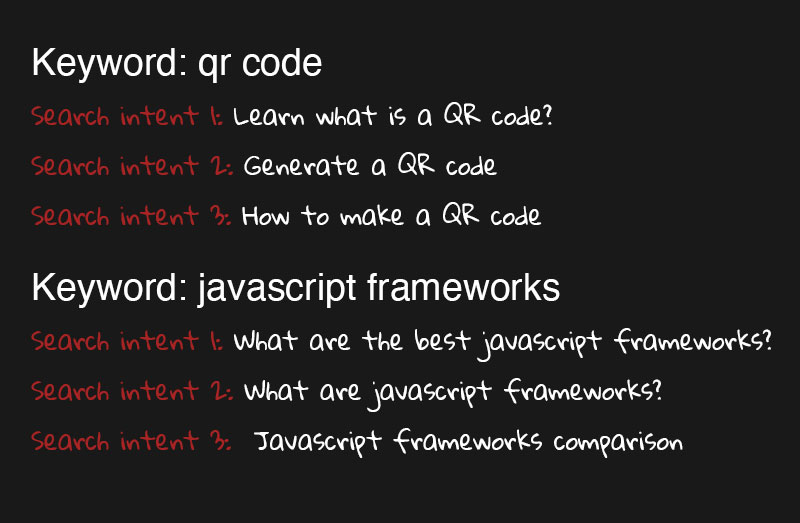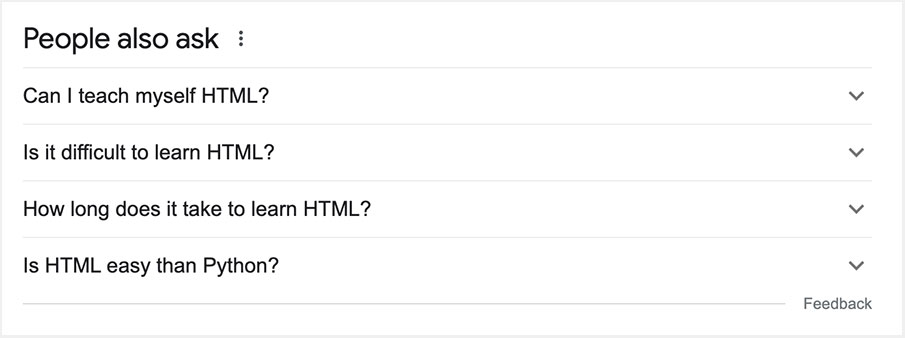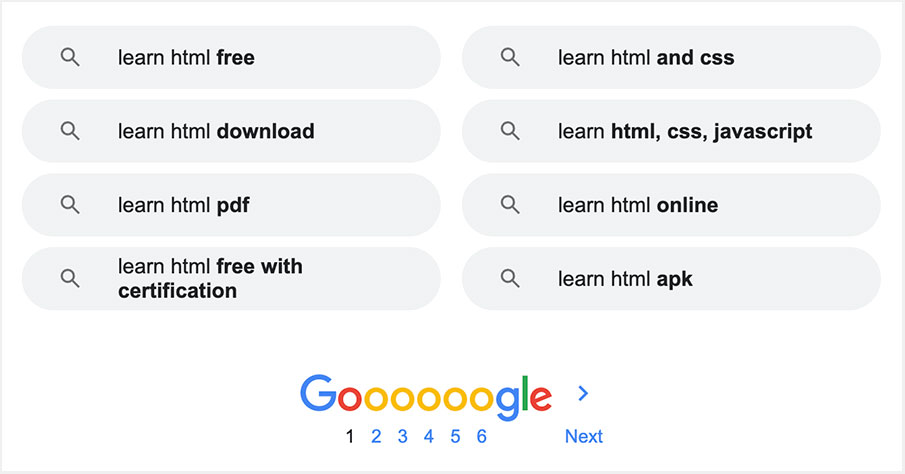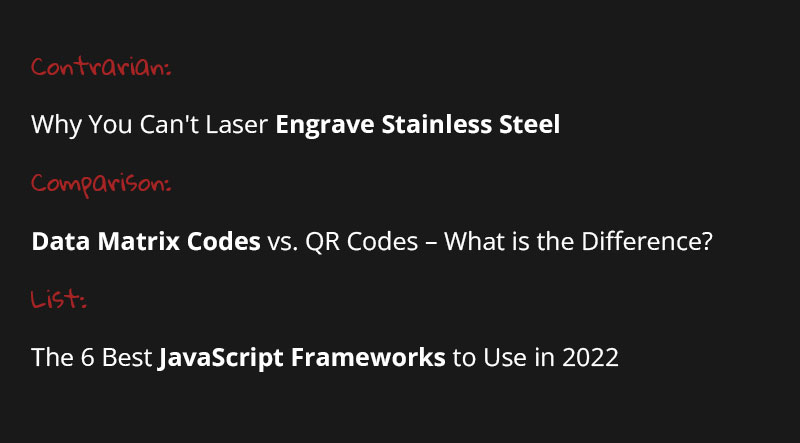How to Produce SEO-Friendly Content for Google
A common mistake people new to SEO make is to think you have to choose between the user and the search engine.
In reality, most content that performs well in search is written with both the user and search engine in mind.
With this dual approach, not only can you attract organic traffic, but conversions and customers as well.
In this article, I reveal 7 steps I have been refining for years to produce content that has attracted millions of visitors. Follow them and you’ll significantly increase your chances of similar results.
1. Choose the right keywords and search intents
In order to produce content that ranks and drives traffic, choosing the right keywords and search intents makes all the difference.
This first step is often overlooked, and it’s an opportunity for you to outsmart your competitors.
Ahrefs and Semrush are two great options of keyword tools to help you gather a list of relevant search terms. Google Autocomplete is also helpful, especially if you’re on a budget.
The most common ways of gathering keywords are starting with a seed term (e.g. HTML, or learn HTML), or identifying your competitor’s keywords.
What is search intent?
Search intent is the user’s primary objective behind the keyword searched. A keyword can have multiple search intents, and intents can evolve over time. In general, the more words a keyword has the easier it is to determine the primary intent.
Understanding search intent better than your competitors is like a superpower. It allows you to produce content that truly fulfills the needs of your visitors, which generally results in more traffic.
Here are two examples of keywords and their associated search intents.

Depending on how in-depth you want to be, an article can cover one or multiple search intents if they are closely related.
2. Analyze the first page and ranking competitors
To further help determine the best keywords and search intents to go for, the first place to look at is the first page of Google’s search results.
You can use BrightLocal to get un-personalized search results from any location.
Look for content you feel confident you can compete with. Start by scanning the headings of these articles to see what’s covered.
In parallel, start outlining your article with improved sections and new topic ideas.
The “People also asked” feature is now shown for many queries and can provide great questions to answer in your article.

Tip 1: Put “what/how/why” in front of your keyword to trigger the “People also ask” feature
Tip 2: Expand and close a question to see more questions appear.
Next, the related keywords shown at the bottom of the page can also provide great section ideas or search terms to use within your article.

In addition to looking at the first page results and relying on your own experience, you can get your content to the next level by interviewing an expert, consulting book notes or summaries, or doing a survey.
3. Prepare content briefs
Whether you have a writer or write the article yourself, preparing content briefs will help you set expectations and have concrete plans.
Your content briefs don’t need to be super complex; here is what I recommend they contain:
- Article (working) title
- A primary keyword
- Search intent description
- Purpose/goal of the article
- Word count range or approximate word count
- Writing style and guidelines
- Sections outline suggestions (with heading tags)
4. Write a strong title and intro
As they say in copywriting, your headline is the most important part of the article. This also applies to your title in SEO.
For the sake of this article, we’ll refer to the title as the actual article title on the page and the title tag, which we recommend to be the same for beginners.
Your headline goal is to get people to click and read the intro. The intro’s goal is to get them to read the next section. And so on…
So it makes sense to spend more time on your title and intro.
Great article titles have two key elements:
- What is the article about: the keyword (ideally early in the title)
- An element of intrigue
The element of intrigue can be many things; here are a few examples with the keywords in bold:

Make sure your title fits the 580px limit. It’s also a common practice to capitalize your titles.
The hard part is to come up with something original, creating instead of copying. You can get away with copying others’ titles, but you’ll miss a chance to stand out and maybe rank higher because of it.
5. Set your E-E-A-T foundations
E-E-A-T is an acronym from Google search quality raters guidelines that stands for Experience, Expertise, Authoritativeness, and Trustworthiness.
Google raters are tasked to look for signals of these 4 criteria on the sites they evaluate. The algorithm then uses their ratings to find patterns among sites with good and bad ratings.
If your site is considered YMYL, the E-E-A-T criteria are even more important.
Websites that sell products or provide services or information that can impact users’ happiness, health, financial stability, or safety are categorized by Google as YMYL – which stands for “Your Money or Your Life.” Source
To improve your E-E-A-T, here is what I recommend you have…
On your site:
- A company about page
- A contact page with an email, a phone number, and a physical address
- A privacy policy and terms and conditions page
On your article page:
- An author bio with a photo and links to social media (especially Linkedin and Twitter)
- Cite authoritative sources in your content
- Show that you have first-hand experience with the subject
- Authorship schema
On the web:
- Get the author featured on other websites
- Get the author cited as a source
- Create a Google My Business
- Get reviews on authoritative review sites
6. Have someone review and proofread your content
This step can be done by the same person. But a second pair of eyes tends to get better results.
The first goal here is to make sure the article aligns with the content brief. Remove anything that doesn’t add to the primary goal of the article and add anything that is missing.
For grammar, I recommend using a tool like Grammarly to help you fix spelling, grammar and punctuation.
As you review the content, look for opportunities to add links to related articles you’ve already written as well as a few external links.
Finally, look for opportunities to create new articles that can be linked to as an additional resource.
7. Refresh your content
Six to twelve months after publication, articles that are not performing should be improved.
Here are a few questions to ask yourself to refresh an article:
- How can I make this article better?
- What part of the article can be removed?
- What is missing from this article?
- Is there new information that would be useful to this article?
- How can the structure be improved?
- Are there images or videos that would make this article better?
If you can’t find ways to improve an article or it’s no longer relevant, it’s best to remove it.
Closing thoughts
SEO takes time. For new websites, it can take 6 months before your content starts to rank.
Most people give up before seeing results. It’s your opportunity to push through and reap the compounding benefits.
Just set a goal, follow these steps, and start publishing on a regular basis.